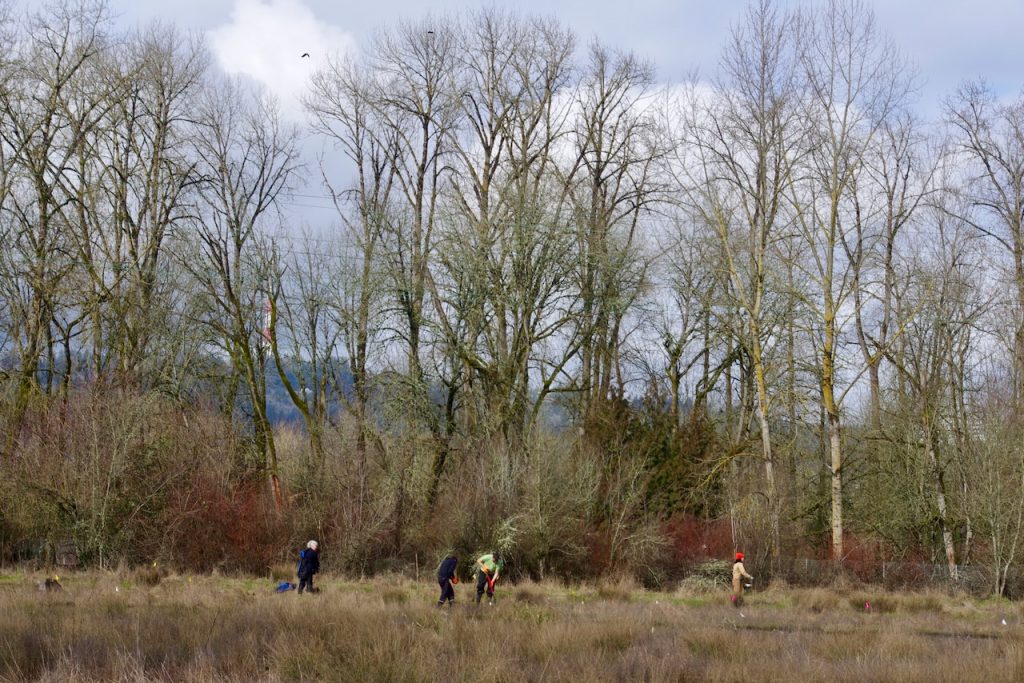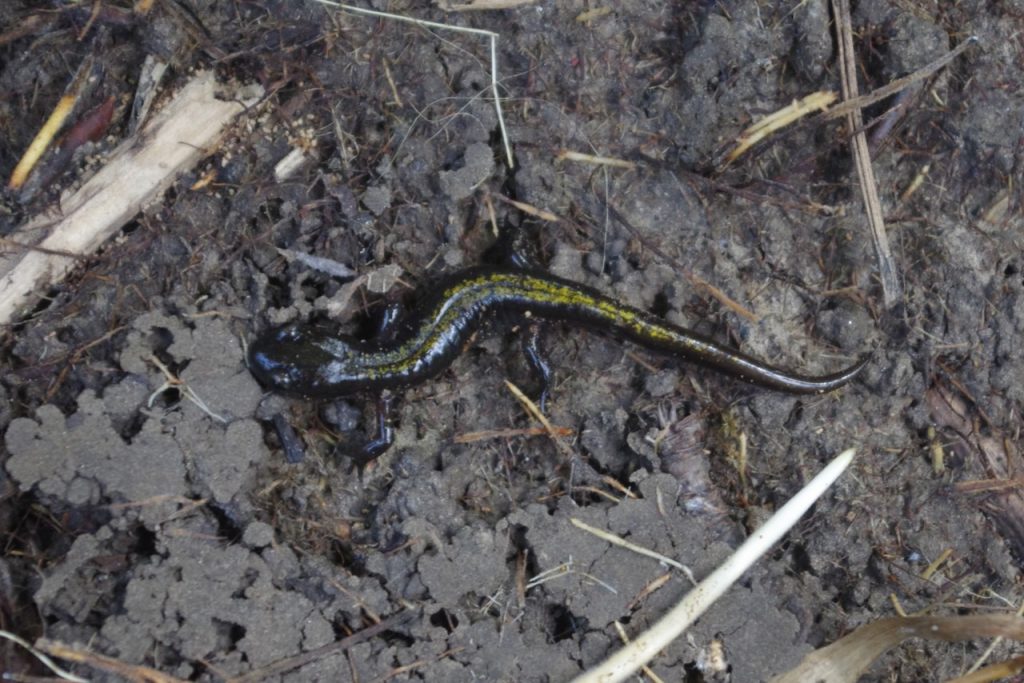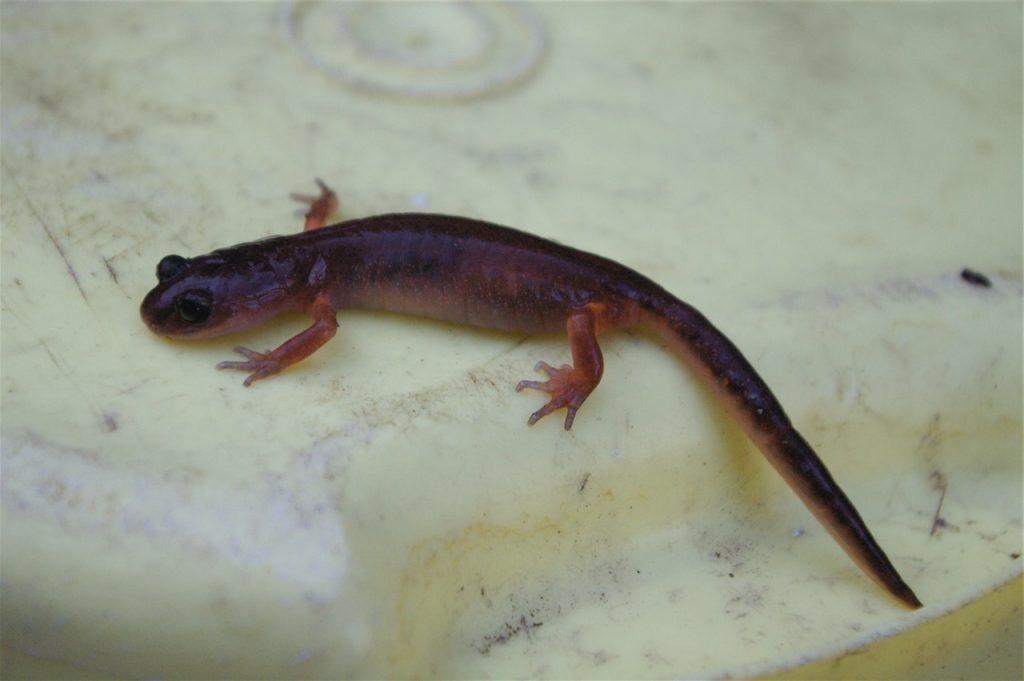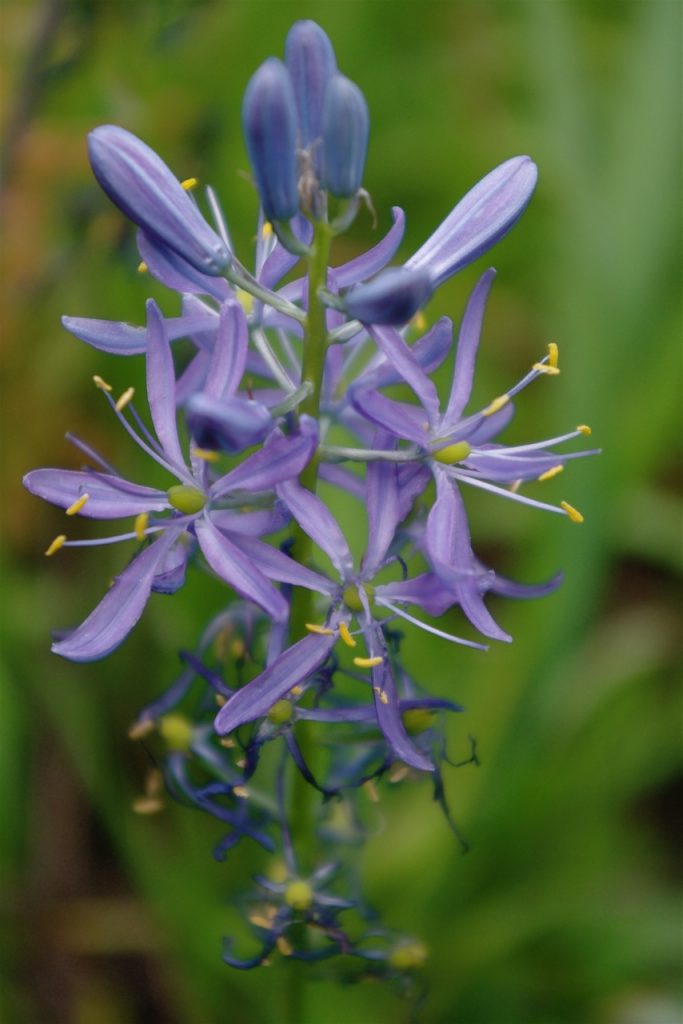Article and photos by John Sparks

Friends of Oaks Bottom volunteers working near the seasonal Aurora Lake in the North Meadow
Three species of salamander call Oaks Bottom home. These amphibians breed, lay eggs, and live their lives in the various habitats that the Bottom offers. Two of the salamanders are terrestrial breeders, while the third uses vernal pools to host its eggs.
All of these species are carnivorous and tend to be gustatory generalists, consuming whatever comes their way that fits the stretch of their jaws. Prey includes spiders, insects, millipedes, pill bugs, earthworms, beetles, maggots, snails, and ants.
During the years 2008 and 2009, Katie Holzer conducted a survey for Portland Parks of amphibians in the Bottom which will be referenced in this article. Holzer studied amphibian habitat and breeding areas, including four seasonal pools north of Wapato Lake: Aurora Lake, Salamander Slough, Tadpole Pond, and a pond she calls “Channels.” The survey was in response to the construction of two new breeding ponds, Aurora Lake in the North Meadow and Tadpole Pond, in order to address the lack of adequate breeding locations for aquatic breeders (long-toed salamander, red-legged frog, Pacific chorus frog). Breeding for these species increased four-fold after the addition of Tadpole Pond and Aurora Lake.
In addition to the three salamander species described, Holzer did observe a rough-skinned newt (Taricha granulosa), one of Oregon’s most recognizable amphibians, in Tadpole Pond. It remains to be seen whether the newt establishes a permanent presence in the Bottom.
Long-toed salamander (Amblystoma macrodactylum)

This dark salamander with a yellowish stripe along its spine is so-named because of the long fourth toe on its rear feet. It is Oaks Bottom’s only aquatic salamander and a species often encountered by FOOB (Friends of Oaks Bottom) crews when performing restoration work in the refuge’s North Meadow, an area off limits to the general public. Long-toed salamanders are an extremely adaptable species and survive from sea level to mountain meadows above 8,000 feet, but they need pools or shallow water to breed.
In Oaks Bottom, the eggs are laid in a seasonal pool as part of a small gelatinous glob that is attached to vegetation. Egg laying takes place from the middle of winter, a risky endeavor as a late freeze can kill off eggs, larvae, and any adults exposed to the elements. Holzer found that long-toes breed in all four of the ponds that she surveyed, beginning in late January. Indeed, they especially favored the newly constructed Tadpole Pond and Aurora Lake. Larvae have metamorphosed to juveniles by the end of summer. The adults are most often found under logs or dead branches that are lying on the ground and will migrate from the wetlands up the bluff. Long-toed salamanders are more active near the surface on a cool, rainy day, especially from March through May.
Western redback salamander (Plethodon vehiculum)

The redback, with its wide dorsal stripe, is a common salamander in western Oregon and has a presence in many back yards even though the owner may not realize it! Like the ensatina (see below), the redback is a terrestrial salamander which lays its eggs under rocks, logs, or roots in the spring. Also like the ensatina, the redback is lungless and breathes through its moist skin. As with other terrestrial salamanders, there is no larval stage.
The adults prefer to live under rotting logs or in talus slopes. At Oaks Bottom, they are residents on the slopes of the bluff above the bottom. They forage at the surface from October through April. In the summer, they move further underground to retain moisture.
Ensatina (Ensatina eschscholtzii)

The name “ensatina” means “small sword” and refers to the way an ensatina may arch or slash its tail back and forth when disturbed. The Holzer study found the ensatina to be the least common of the three salamanders at Oaks Bottom although it is abundant in other Portland area locations. They seem to be more tolerant of disturbance than other species and often live in crawl spaces, wood piles, and ivy “deserts.”. Ensatinas exhibit variable coloring within their range west of the Cascades and Sierras, but the ones in Portland have a red-brown upper body with a creamy orange underside. The body has 12 or 13 grooves or rings all the way around.
At Oaks Bottom, ensatinas are most active at the surface from fall to mid-spring (November through May). Like the redback salamander, ensatinas retreat from the surface during summer.
Principal references:
- Corkran, Charlotte C. and Chris Thoms. Amphibians of Oregon, Washington and British Columbia. Lone Pine Publishing, 1996.
- Holzer, Katie. Two-year study of amphibians in Oaks Bottom Wildlife Refuge. City of Portland: Bureau of Parks and Recreation, August 2009. https://www.portlandoregon.gov/bes/article/273024


